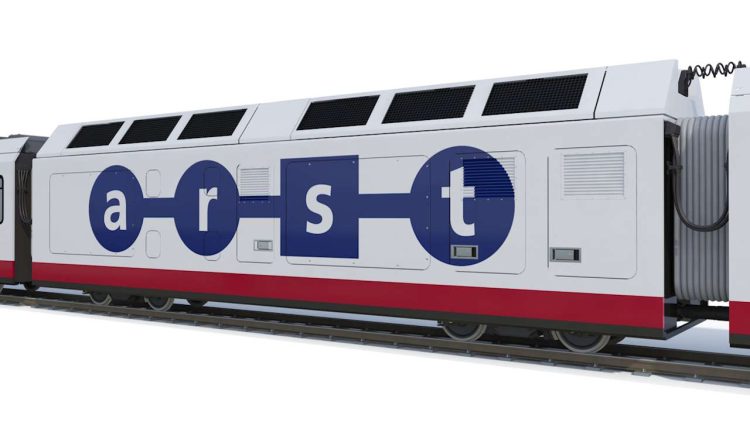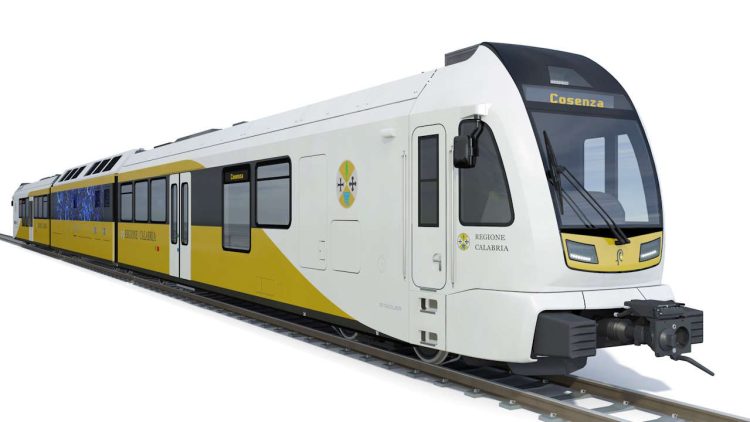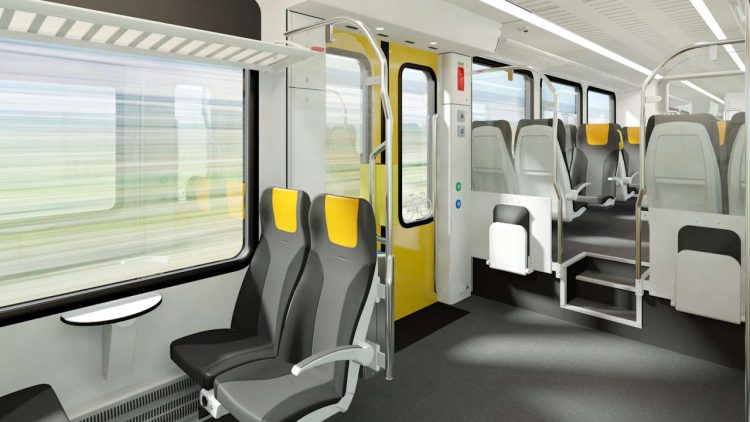Stadler has been awarded two framework agreements to supply and maintain ten hydrogen-powered trains for Azienda Regionale Sarda Trasporti (ARST) in Sardinia and 15 similar trains for Ferrovie della Calabria (FdC) in Calabria.
Both railways are narrow gauge, which means that Stadler is the first train manufacturer in the world to supply hydrogen-powered trains for narrow-gauge railways.
However, Stadler has previously delivered FLIRT H2 hydrogen-powered trains to the USA. The initial call-off from the framework agreements is for six trains for Sardinia and six for Calabria, with all of them to be built at Stadler’s headquarters at Bussnang in Switzerland.

Each train consists of two passenger cars of lightweight aluminium construction, which helps increase the train’s energy efficiency. With an overall length of around 50 metres and 89 seats per vehicle, they have a total capacity of 155 passengers and are fully accessible for people with reduced mobility.
Specific areas near the entry and exit doors provide room for wheelchairs, pushchairs, and bicycles, and the toilets are PRM-compliant with TSI standards. A power pack houses the fuel cells, hydrogen tanks, and other technical equipment.

The contracts were awarded following public tenders launched last month, and cover the design, production, delivery, and maintenance of the trains. They will incorporate ecological fuel-cell and hydrogen propulsion and are used on regional and suburban services on the narrow-gauge (950-mm) network in the two Italian regions. Finance for both projects is from the EU’s National Recovery and Resilience Plan (PNRR).

Ansgar Brockmeyer, Executive Vice President Marketing & Sales of Stadler, commented: “Stadler enjoys a long and innovative partnership with ARST and FdC. We are proud to be working together to drive forward the decarbonisation of rail transport in Italy.
“The new narrow-gauge trains with hydrogen propulsion are a world premiere and will pioneer sustainable rail transport on narrow-gauge lines worldwide. We would like to thank ARST and FdC for their trust in us and look forward to expanding our partnership even further in the future.”
These contracts confirm Stadler’s establishment as a market leader in Italy for the design, supply, commissioning, and entry into service of narrow-gauge railway vehicles. The company has previously received orders for over 130 trains that are in the process of delivery to Ferrovie Appulo Lucane in the Apulia and Basilicata Regions, Ente Autonomo Volturno (EAV) in the Campania Region, and Ferrovia Vigezzina-Domodossola in the Piedmont Region.
Stadler has also received orders for bimodal locomotives for Trenitalia, trams for ATM in Milan, and additional narrow-gauge metro vehicles for EAV.





Responses
Maybe the UK Government should consider ordering new hydrogen cell trains that would be ideal to replace the existing ageing diesel trains used in Cornwall, Devon, Southwest England, Bristol, West of England, Northwest England, Northeast England, Southwest and Northern Scotland. If Stadler are to manufacture new trains to help reduce CO2 emissions and decrease greenhouse gases that older diesel trains imposes.
They definitely should consider but our government (uk) is so slow on the uptake of anything and have to follow suit when it comes to it, so we will have to wait whilst the rest of the world gets on board with it all! We’ll be still sat here waiting for another charger unit to be connected up and an out of date HS2 to be completed